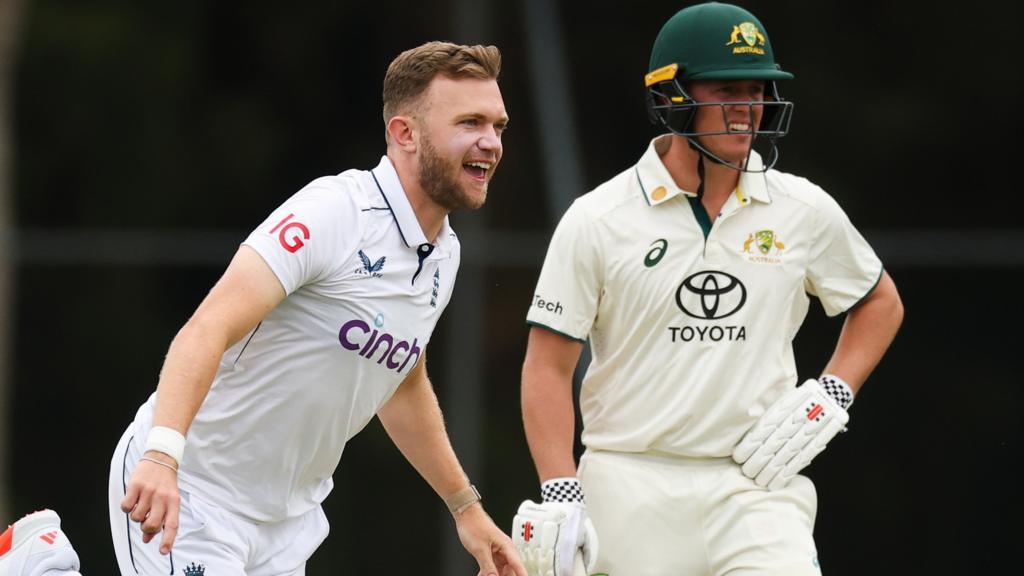With the onset of early summer and the imminent announcement of a Test squad, I am reminded of my own days vying for selection in the England side.
Between 2010 and 2017, I represented England at international level. Each new season brought a renewed sense of optimism, ambition and resolve to perform strongly in County Championship matches and earn that much-coveted England call-up.
Securing wickets was the primary currency. With James Anderson and Stuart Broad established as mainstays, the likes of Tim Bresnan, Graham Onions, Chris Tremlett, Chris Woakes, myself and others all battled for the remaining spot in the bowling line-up.
Such competition fuelled determination, knowing that everyone was working toward the same goal. Demonstrating consistency and the physical capacity to deliver strong performances over several weeks was vital to prove one’s readiness for the rigours of international cricket.
Recent years have seen a shift in England’s selection ethos under Rob Key, Brendon McCullum and Ben Stokes. I wonder if the emotions felt by those on the verge of selection—the anticipation and anxiety I recall so vividly—have evolved as well.
There remains room for players to make a statement in the traditional way, though it seems an increasingly challenging path to a place in the England squad.
Sam Cook boasts 318 first-class wickets at an average of just 19.77.
Cook has been arguably the outstanding seam bowler in county cricket in recent seasons. Now 27, with 318 wickets at a sparkling average, his credentials suggest his international opportunity is imminent.
His omission from Essex’s recent Championship fixture against Somerset at the request of England selectors points to a likely inclusion for the forthcoming Test against Zimbabwe.
Despite his impressive record, it feels as though one standout performance has finally convinced the selectors to back him.
Last summer, on unresponsive pitches and with the Kookaburra ball in play, bowlers laboured for success. Cook’s match-winning 10-wicket haul for Essex against Nottinghamshire was exactly the kind of display to command attention from the England hierarchy, who now look for attributes beyond just numbers when assembling squads.
Perhaps this is the key difference compared to my own experiences a decade ago—selection can now hinge on one eye-catching performance, making the process distinctly more exhilarating.
Cook’s consistency is undeniable, but it required a truly exceptional showing to earn a serious look from Key and his colleagues. With injuries opening the door and only limited spots for traditional English seamers, a single landmark match can shift the landscape for aspirants.
Wood responds to England’s ‘golf, golf, golf’ narrative
Cook on verge of Test honours as Essex rests him on England’s advice
Receive the latest cricket news on your phone
There are figures in the domestic circuit with the potential to represent England. The likes of Sonny Baker and John Turner—both of Hampshire, though Turner has recently played for Lancashire on loan—have caught England’s eye, even with limited first-class exposure.
For bowlers like Baker and Turner, who possess the skills to challenge elite batsmen, a single influential spell may be all that’s required. Indeed, there is precedent: Ben Stokes first noticed off-spinner Shoaib Bashir through a social media clip and shared it with Key and McCullum. Soon after, Bashir found himself in the England fold.
Another key contrast to my own era is the national team’s changing relationship with franchise cricket, particularly the Indian Premier League.
Now, it is accepted that players possess greater agency and will understandably pursue lucrative franchise opportunities—given cricket careers can be fleeting.
This contrasts sharply with my own attempt to enter the 2013 IPL auction. Despite my strong performances in India and a successful T20 World Cup, I required explicit permission from the ECB—permission that was promptly denied. Andy Flower, the coach, explained the reasoning: I needed to be involved in county cricket at the start of a pivotal double Ashes year to remain in Test contention.
I recall discussing this with Kevin Pietersen, who was the first among English players to truly appreciate the IPL’s value, and Eoin Morgan. Yet, ultimately, I followed the guidance: Test cricket was the ultimate prize and justified any sacrifice required for a place in the side.
The times have unquestionably changed. Today’s up-and-coming players have uniquely exciting prospects within reach at the highest level.
For modern players, every appearance is a chance to attract selectors’ eyes—to be that next viral clip shared amongst England’s management, prompting conversations of ‘we simply cannot ignore this’.

